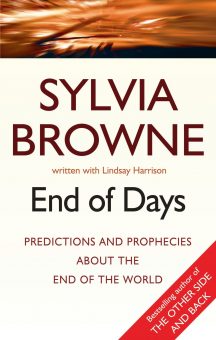The Maya
The Mayan civilization is thought to have been born in the Yucatan Peninsula in about 2600 BC and thrived through approximately AD 1300. They excelled brilliantly in astronomy, hieroglyphic writing, science, mathematics, art, farming, weaving, architecture, and creating highly technical, intricate calendar systems, to name only a handful of their gifts. Their society was formed around a hierarchy of class distinctions, with kings and priests of clearly defined territories as their ruling class and a vast peasant population as the lowest class providing slave labor, and the Maya ultimately spread throughout what is now Mexico, El Salvador, Belize, Honduras, and Guatemala.
Almost as fascinating as the Mayan civilization itself is the mysterious abruptness with which it vanished. It was as if a complex, sophisticated society of fifteen million people simply walked away from their lives one day and never came back, leaving nothing but deserted cities and abandoned architectural masterpieces in their wake. To this day there are no definitive answers but many theories about what happened so suddenly and with such finality. Some believe a series of droughts forced the population into a choice between relocating or starving to death. Some believe a revolt of the peasants/slaves left a handful of nobility to work the land with no experience or expertise, and as a result the society essentially imploded from its inability to support itself. Some believe that the overzealous agricultural pursuits of the Maya led to everything from severely depleted soil to an ultimately destructive “slash and burn” approach to clearing the rich Central American forests for farmland, so that this civilization literally robbed their land of its ability to sustain them. Some believe deadly viruses destroyed the Maya, while others believe that overpopulation was to blame. Again, the only thing about the vanishing of the Maya that experts seem to agree on is that no one knows with any certainty what really happened to those fifteen million people around AD 1300. And, because the Spanish conquistadors made it their practice to kill the Mayan priests and nobility and to burn Mayan books and records when they invaded Central and South America, it’s likely that no one ever will.
What has survived after all these centuries is the fascinating and very complicated Mayan calendar, which consisted of cycles of 260 days, each day having one of twenty names represented by its own symbol. The days of the Mayan calendar were numbered one through thirteen, but since there are twenty names, after a thirteen-day period was finished, the next day was numbered “one” again. The calendar also kept track of a solar year in which the months were named, and following the eighteen months of their solar year, they included a five-day month in which the days were thought to be unlucky and, as a result, were not given names.
I won’t pretend to be able to decipher the intricacies of the Mayan calendar. Instead, I’ll focus on an element of it that everyone can decipher: it ends on December 21, 2012, which has been a source of concern for those who are aware of it and are determined to find specific “doomsday” predictions to be fearful of. But the Mayan culture never intended to imply that a cataclysmic end of the world would be happening on 12/21/12, or the winter solstice of 2012. Their prophecy is that on that date the world will be making a transition from one age into another, and it is humankind’s choice whether that transition will involve violently dramatic changes or will simply evolve with graceful, peaceful tranquility.
Every 5,125 years, the Maya say, one cycle on Earth ends and another begins. There are five cycles, each of them with characteristics roughly corresponding to our passage through a twenty-four-hour day. The first of Earth’s cycles is comparable to a galactic morning, when our solar system is just approaching the central light of the universe. The second cycle, midday, is our solar system’s closest proximity to the universal central light. The galactic afternoon, or third cycle, occurs as our solar system begins moving away from the central light. The fourth cycle corresponds to the night, when our solar system is at its farthest from the central light. And the fifth cycle is that “darkest before the dawn” period, as our solar system pulls away from being devoid of light and moves toward its first cycle of morning again.
Pages: 1 2 3 4 5 6 7 8 9 10 11 12 13 14 15 16 17 18 19 20 21 22 23 24 25 26 27 28 29 30 31 32 33 34 35 36 37 38 39 40 41 42 43 44 45 46 47 48 49 50 51 52 53 54 55 56 57 58 59 60 61 62 63 64 65 66 67 68 69 70 71 72 73 74 75 76 77 78 79 80 81 82 83 84 85 86 87 88 89 90 91 92 93 94 95 96 97 98 99 100 101 102 103 104 105 106 107 108 109 110 111 112 113 114 115 116 117 118 119 120




